German cuisine is a treasure trove of rich flavors, hearty comfort foods, and timeless traditions. Each dish tells a unique story from the legendary Maultaschen, often called Germany’s secret ravioli, to the robust and flavorful Sauerbraten. These meals are more than just food; they represent centuries of cultural heritage and regional pride.
Explore the dishes that have stood the test of time, offering a taste of history with every bite. Get ready to discover some of the most iconic and beloved recipes that define German culinary excellence.

1. Maultaschen
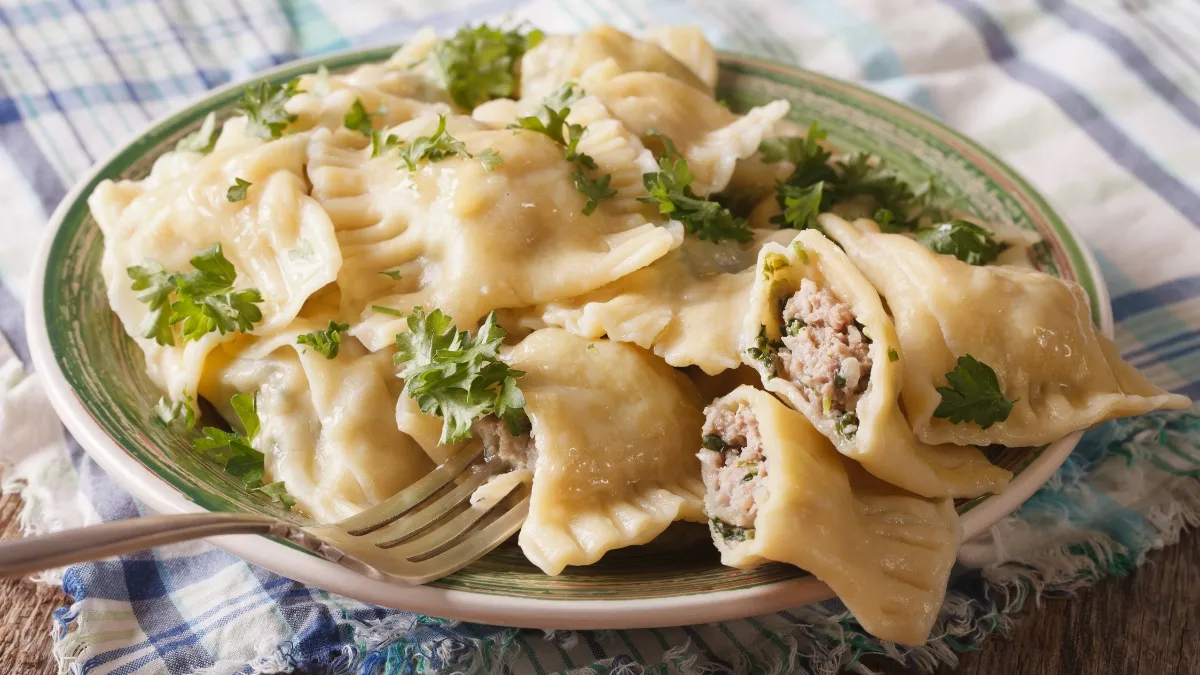
Often referred to as “German ravioli,” Maultaschen is a Swabian delicacy with a rich history and a unique story. Legend has it that this dish was created by monks in the Maulbronn Monastery who wanted to hide meat during Lent. They cleverly wrapped it in dough, making it “invisible” to God. Today, these pockets of pasta are filled with a mix of minced meat, spinach, breadcrumbs, and herbs, offering a hearty and flavorful experience.
Maultaschen can be prepared in various ways, making it a versatile dish. Some prefer it served in a clear broth, while others enjoy it pan-fried with onions and eggs. In Swabia, it’s even celebrated during Maultaschen festivals, showcasing its cultural significance. The dish’s texture and taste are a delightful blend of soft pasta and savory filling, making it a comfort food for many Germans.
What makes Maultaschen stand out is its ability to tell a story. It’s not just a meal but a piece of history that reflects the ingenuity and traditions of Swabian culture. No matter if it’s in a cozy home kitchen or at a local festival, this dish offers a taste of Germany’s culinary creativity.
2. Labskaus
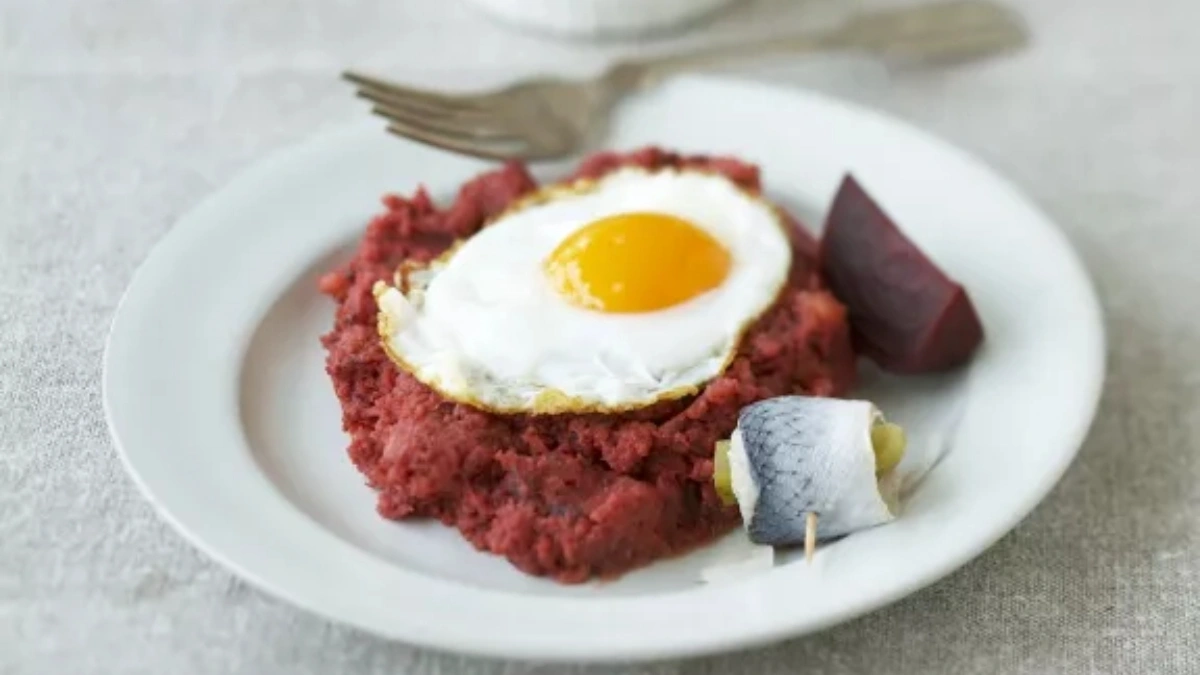
Labskaus is a dish that captures the essence of northern Germany’s maritime heritage. Originally a meal for sailors, this hearty dish combines corned beef, potatoes, and beetroot into a flavorful mash. Topped with a fried egg and pickles, it’s a colorful and satisfying plate that reflects the resourcefulness of seafarers.
The dish’s origins date back to the 16th century when sailors needed meals that could last long voyages. Labskaus provided the necessary nutrients and energy, making it a staple on ships. Today, it’s a beloved comfort food in cities like Hamburg and Bremen, often served with herring or rollmops on the side.
Despite its humble appearance, Labskaus has a unique flavor profile. The sweetness of the beetroot balances the saltiness of the corned beef, while the pickles add a tangy crunch. It’s a dish that tells the story of survival and adaptation, offering a glimpse into the lives of those who braved the seas.
3. Sauerbraten
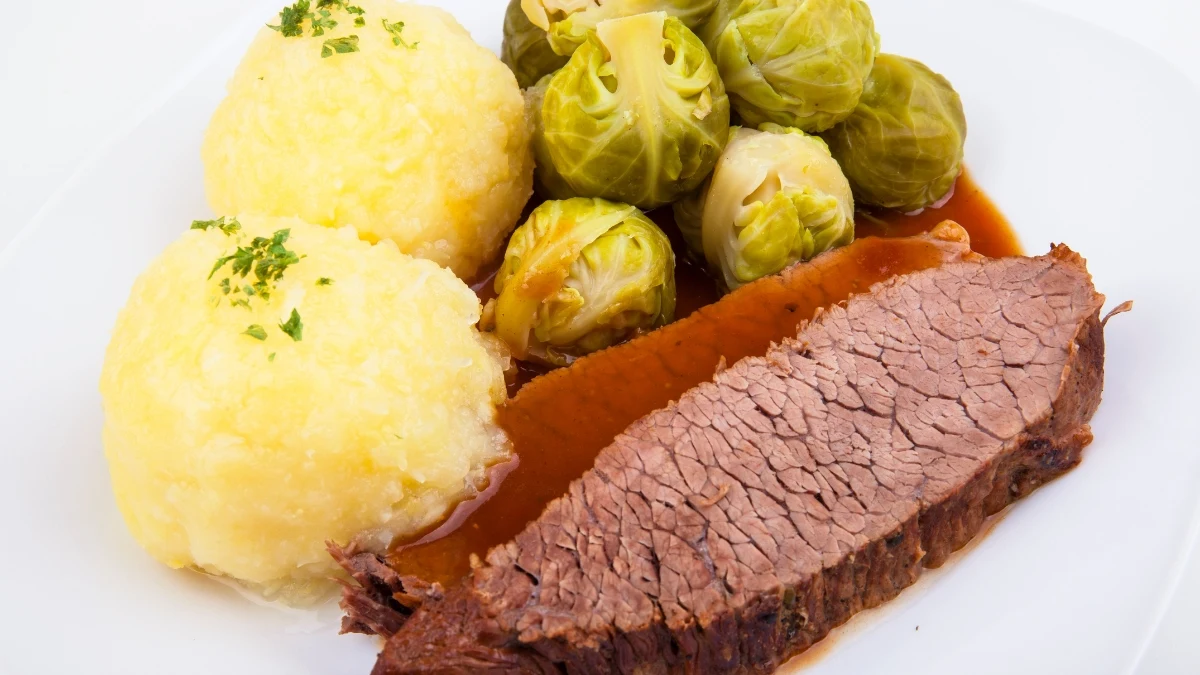
Sauerbraten is a dish that embodies the heart and soul of German cuisine. This pot roast is made by marinating beef in a mixture of vinegar, wine, and spices for several days, resulting in a tender and flavorful meal. The long marination process breaks down the meat’s fibers, ensuring it melts in your mouth.
Traditionally, Sauerbraten is served with a rich gravy made from the marinade, along with sides like red cabbage and potato dumplings. Each region in Germany has its own twist on the recipe, with some using different meats like pork or venison. The dish’s tangy and savory flavors make it a favorite during family gatherings and festive occasions.
What sets Sauerbraten apart is its deep connection to German culture. It’s a dish that requires patience and care, reflecting the values of tradition and craftsmanship. For anyone looking to experience authentic German cuisine, Sauerbraten is a must-try.
4. Königsberger Klopse
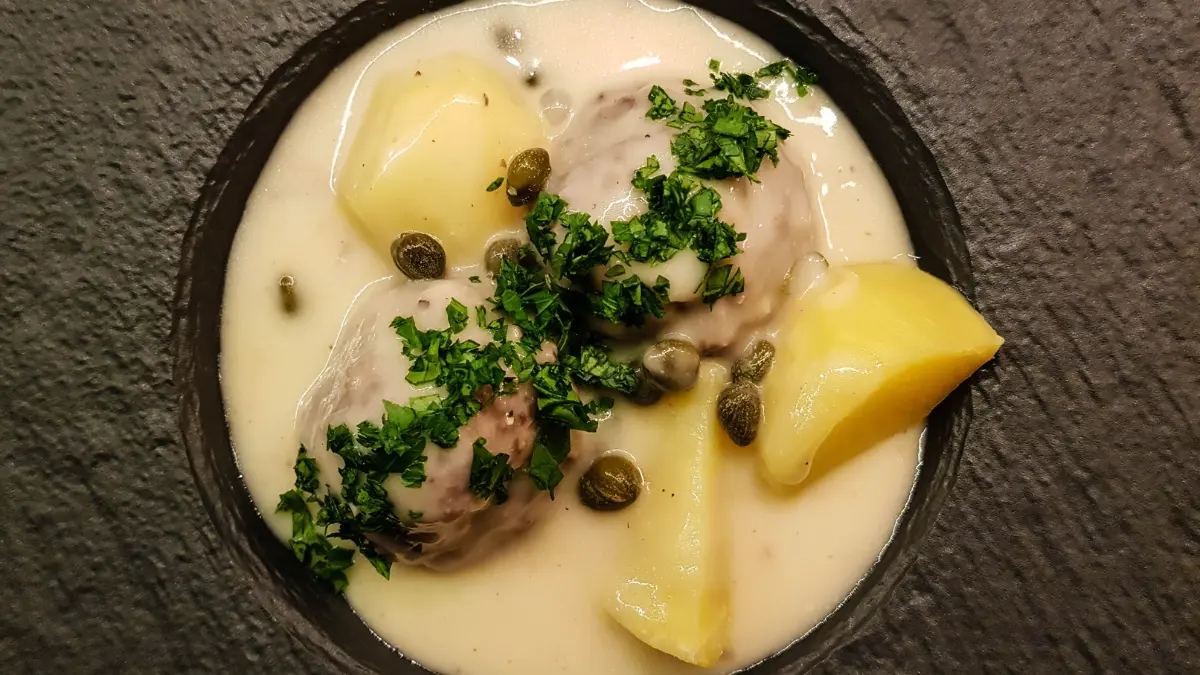
Königsberger Klopse is a dish that carries the legacy of Prussia’s historic Königsberg region. These delicate meatballs, made from minced veal or pork, are simmered in a creamy white sauce flavored with capers and lemon. The result is a dish that’s both rich and refreshing, with a unique balance of flavors.
The dish’s origins date back to the 19th century, when it was a favorite among the Prussian elite. Today, it’s a beloved comfort food in Germany, often served with boiled potatoes or rice. The tangy sauce, made from broth, cream, and a touch of mustard, complements the tender meatballs perfectly.
Königsberger Klopse is more than just a meal; it’s a piece of history. The dish’s name and recipe have survived through centuries, offering a taste of a bygone era. For anyone exploring German cuisine, this dish is a delicious way to connect with the past.
5. Schupfnudeln
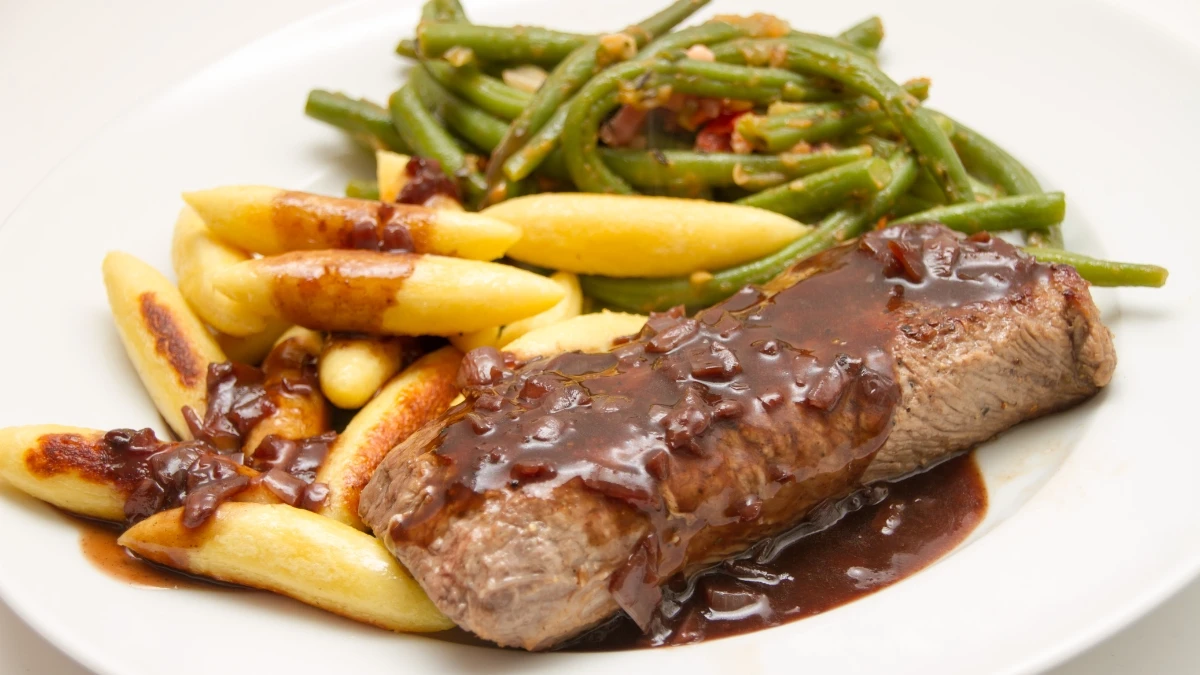
Schupfnudeln, also known as “finger noodles,” are a Southern German specialty that resembles Italian gnocchi. Made from a dough of potatoes and flour, these dumplings are shaped into small, elongated forms and then pan-fried or boiled. Often served with sauerkraut, bacon, or onions, they’re a hearty and satisfying dish.
The origins of Schupfnudeln can be traced back to the rural regions of Bavaria and Baden-Württemberg, where potatoes were a staple crop. The dish’s simplicity and versatility made it a popular choice among farmers and families. Today, it’s enjoyed across Germany, with each region adding its own twist to the recipe.
What makes Schupfnudeln special is its comforting texture and flavor. The crispy exterior contrasts beautifully with the soft, pillowy interior, creating a delightful eating experience. A side dish or a main course, Schupfnudeln is a testament to the ingenuity of German home cooking.
Related Article:
The Secret 5-Ingredient Pasta Recipe Even Chefs Won’t Tell You
6. Himmel und Erde
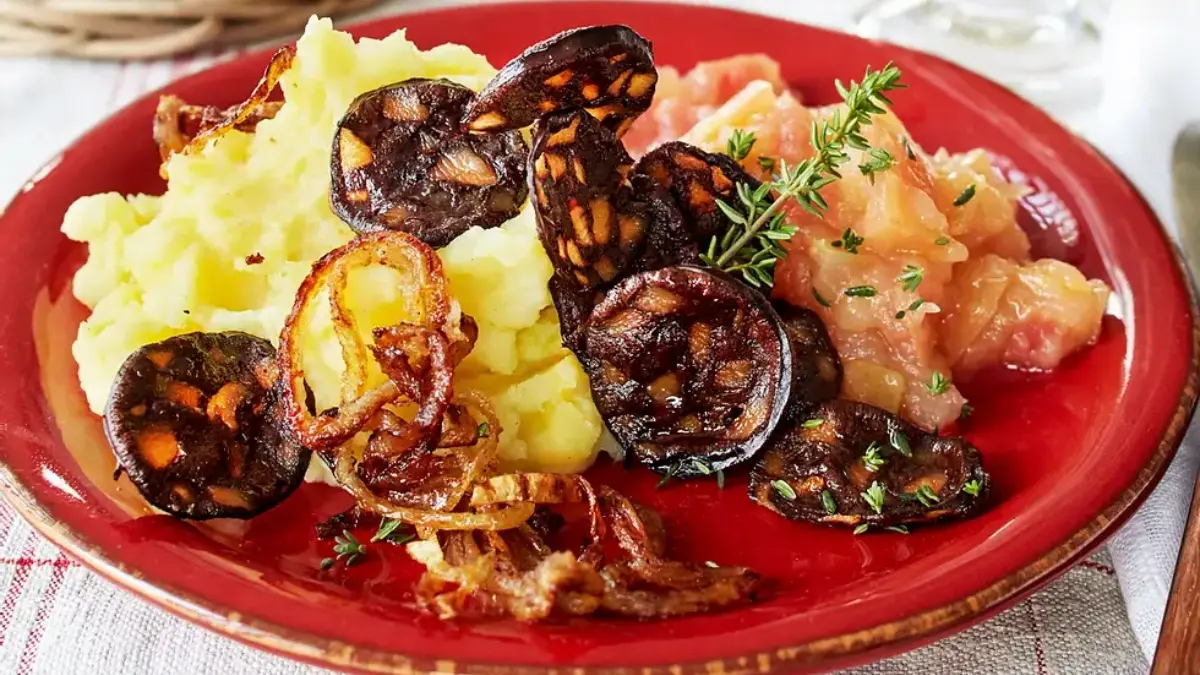
Himmel und Erde, which translates to “Heaven and Earth,” is a dish that beautifully combines two humble ingredients: mashed potatoes and apples. The name reflects the contrast between the earthy potatoes and the sweet, heavenly apples. Often served with blood sausage or fried onions, this dish is a staple in the Rhineland and Westphalia regions.
The origins of Himmel und Erde are rooted in rural German cuisine, where resourcefulness was key. Potatoes and apples were readily available, making this dish both economical and nutritious. The sweetness of the apples balances the savory flavors of the potatoes and sausage, creating a harmonious blend of tastes and textures.
What makes this dish special is its simplicity and depth. It’s a meal that tells a story of tradition and ingenuity, offering a comforting taste of home. At a local festival or during a family dinner, Himmel und Erde is a true representation of German culinary heritage.
Related Article:
15 Hydration Mistakes That Are Destroying Your Body After 50
7. Saumagen
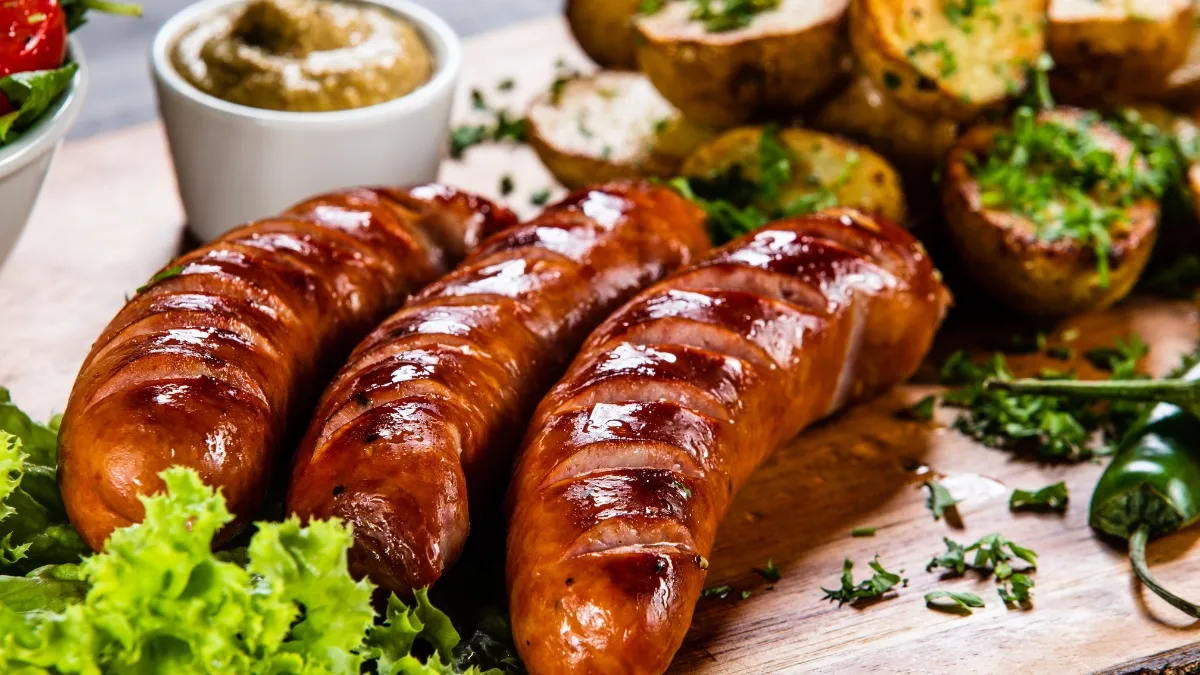
Saumagen, a Palatinate specialty, is a dish that gained international fame thanks to former German Chancellor Helmut Kohl. This hearty meal consists of pork-stuffed pig’s stomach, similar to a sausage casing, filled with a mixture of meat, potatoes, and spices. It’s then sliced and pan-fried before serving.
The dish’s origins lie in the rural regions of the Palatinate, where farmers needed hearty meals to sustain them through long days of work. Saumagen was a way to use every part of the pig, reflecting the resourcefulness of traditional German cooking. Today, it’s a beloved dish in the region, often served with sauerkraut and a glass of local wine.
Saumagen’s rich flavors and hearty texture make it a standout dish. It’s not just a meal but a symbol of regional pride and tradition. For anyone exploring German cuisine, Saumagen offers a unique and authentic taste of the Palatinate.
8. Spätzle
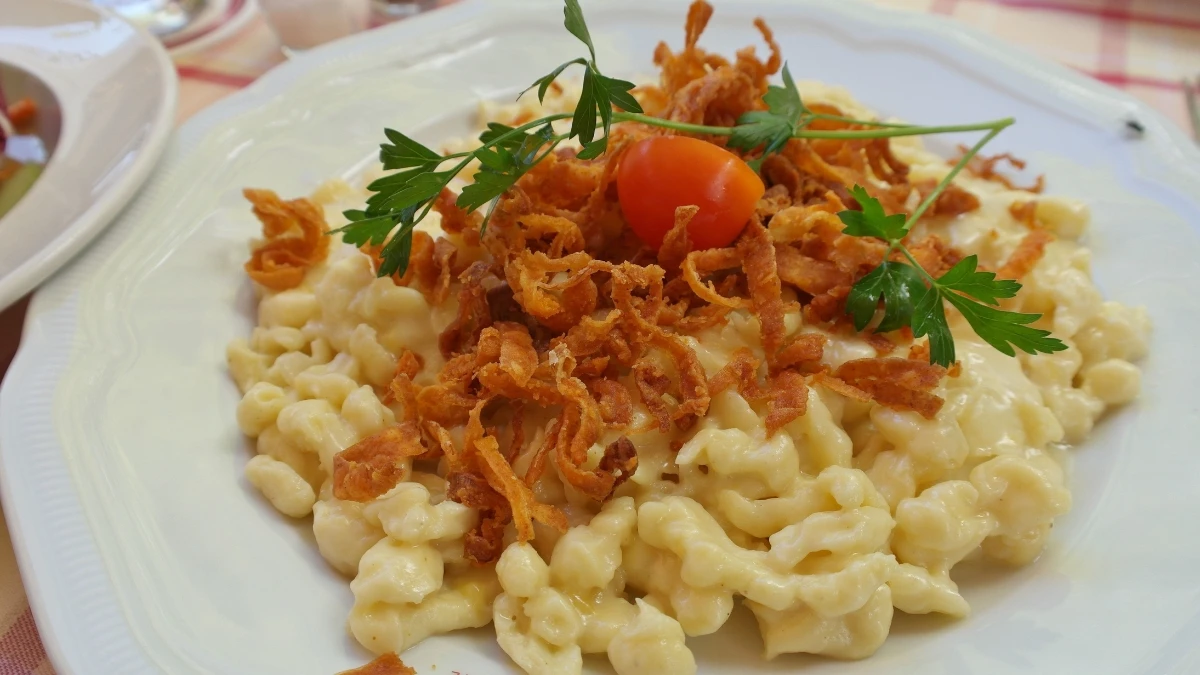
Spätzle, a type of soft egg noodle, is a cornerstone of Swabian cuisine. These delicate noodles are made from a simple dough of eggs, flour, and water, which is then pressed or scraped into boiling water. The result is a tender, chewy noodle that can be served in countless ways.
In Swabia, Spätzle is often enjoyed as a main course, topped with cheese and caramelized onions to make Käsespätzle. It’s also a popular side dish, accompanying meats like roast pork or schnitzel. The versatility of Spätzle makes it a favorite in German households, with each family adding their own twist to the recipe.
What sets Spätzle apart is its handmade quality. Making the noodles requires skill and patience, reflecting the care and tradition that go into German cooking. No matter how it is served, Spätzle is a comforting and satisfying dish that embodies the heart of Swabian cuisine.
Related Article:
15 Quick & Healthy Weeknight Dinner Ideas to Transform Your 2025!
9. Bratkartoffeln
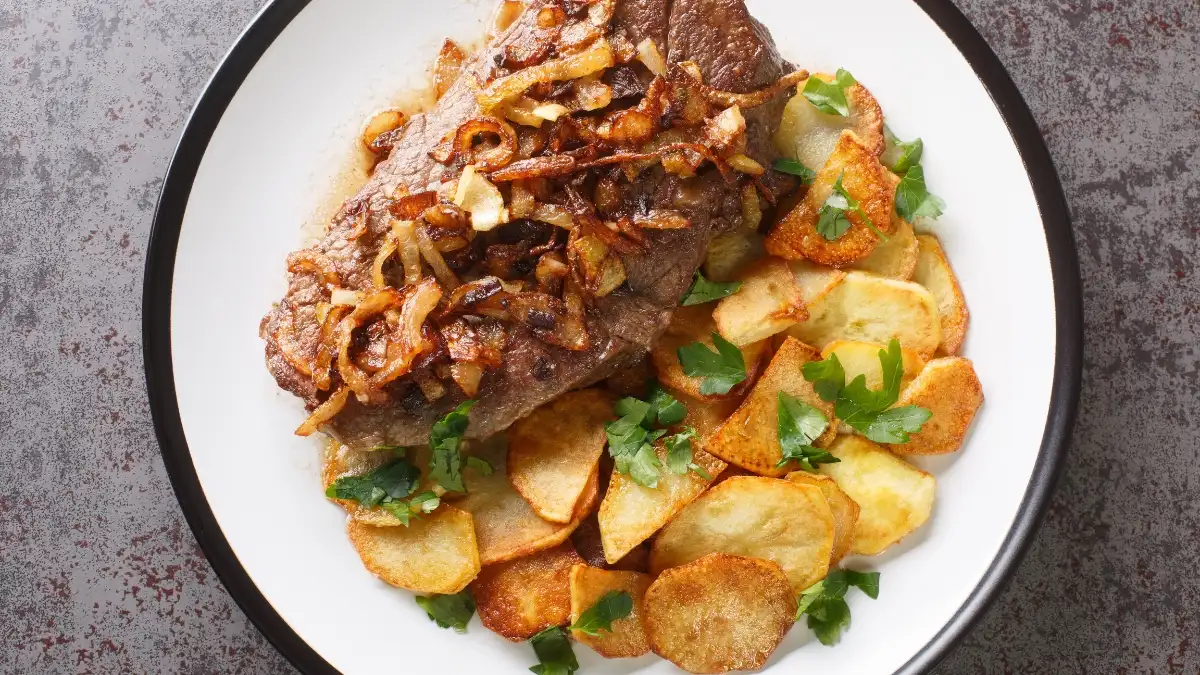
Bratkartoffeln, or pan-fried potatoes, are a simple yet beloved dish in German cuisine. Thinly sliced potatoes are fried until golden and crispy, often with onions, bacon, or herbs. This dish is a staple in homes and restaurants across Germany, offering a comforting and versatile side to almost any meal.
The beauty of Bratkartoffeln lies in their simplicity. With just a few ingredients, this dish transforms ordinary potatoes into something extraordinary. It’s a favorite at breakfast, lunch, or dinner, often paired with sausages, eggs, or a fresh salad. Each bite offers a satisfying crunch and a burst of flavor.
What makes Bratkartoffeln special is its universal appeal. It’s a dish that transcends regions and generations, bringing people together over a shared love of good food. For anyone exploring German cuisine, Bratkartoffeln is a must-try classic.
10. Zwiebelkuchen
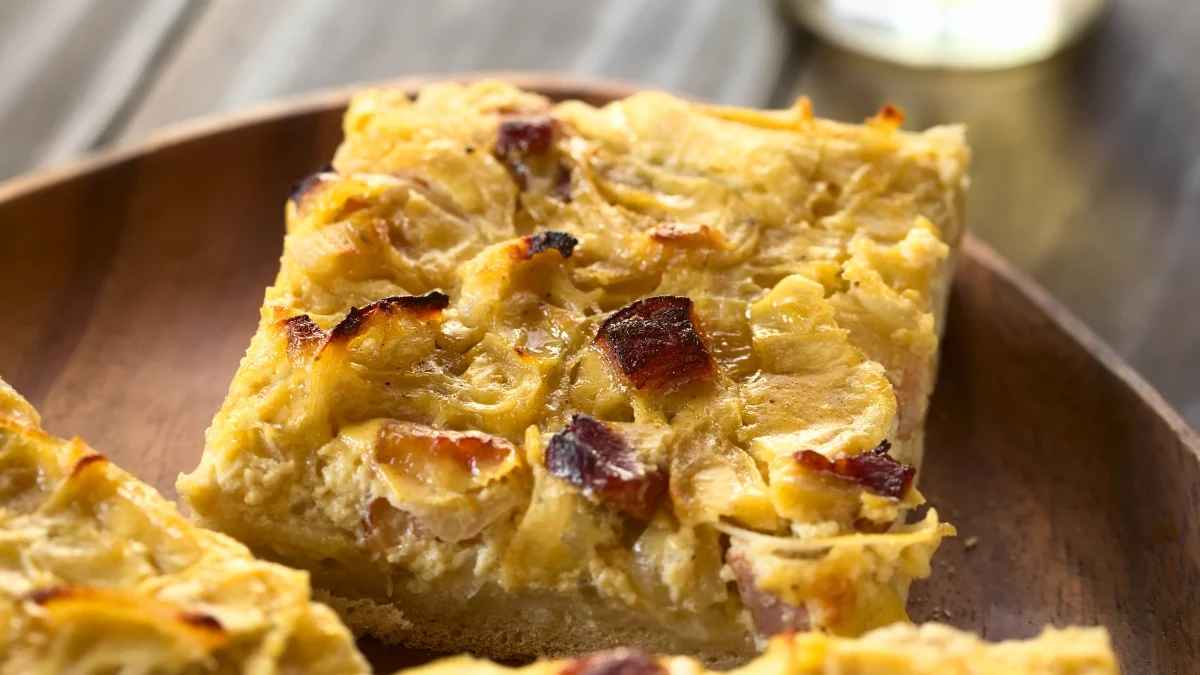
Zwiebelkuchen, or onion cake, is a savory tart that signals the arrival of autumn in Germany. Made with a yeast dough base, it’s topped with a rich mixture of caramelized onions, cream, and bacon. Traditionally, it’s enjoyed with Federweisser, a young, slightly sparkling wine, during the harvest season.
This dish is particularly popular in the wine-growing regions of southwestern Germany, where it’s a staple at wine festivals and family gatherings. The sweetness of the onions pairs perfectly with the tangy Federweisser, creating a harmonious combination of flavors.
Zwiebelkuchen is more than just a dish; it’s a celebration of the season. Its warm, comforting flavors make it a favorite during cooler months, offering a taste of German tradition and hospitality. For anyone looking to experience the flavors of autumn, Zwiebelkuchen is a delicious place to start.
11. Rouladen
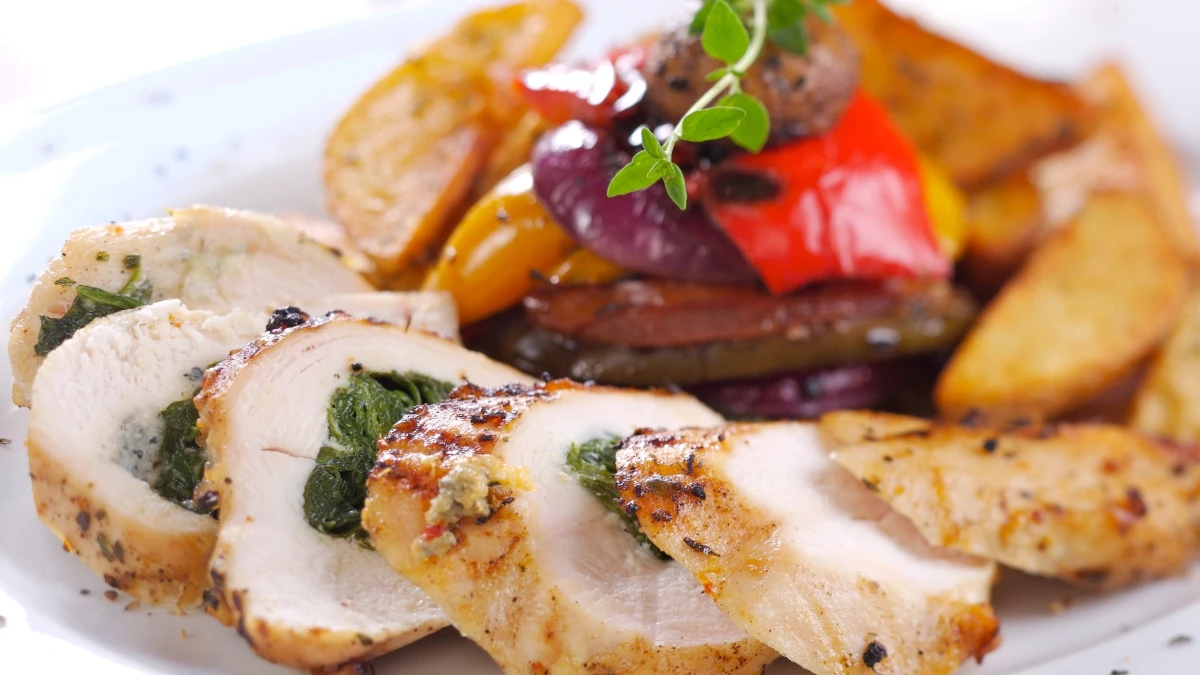
Rouladen is a dish that epitomizes the heartiness and craftsmanship of German cooking. Thin slices of beef are rolled around a filling of mustard, bacon, onions, and pickles, then slowly braised in a rich gravy until tender. The result is a flavorful and comforting meal that’s often served with red cabbage and potato dumplings.
This dish has deep roots in German tradition, often reserved for special occasions and family gatherings. The combination of savory beef, smoky bacon, and tangy pickles creates a complex flavor profile that’s both satisfying and memorable. Each bite tells a story of care and attention, as the rolls are meticulously prepared and cooked to perfection.
What makes Rouladen stand out is its ability to bring people together. It’s a dish that requires time and effort, making it a labor of love. For anyone exploring German cuisine, Rouladen offers a taste of tradition and a glimpse into the soul of German home cooking.
12. Grünkohl mit Pinkel
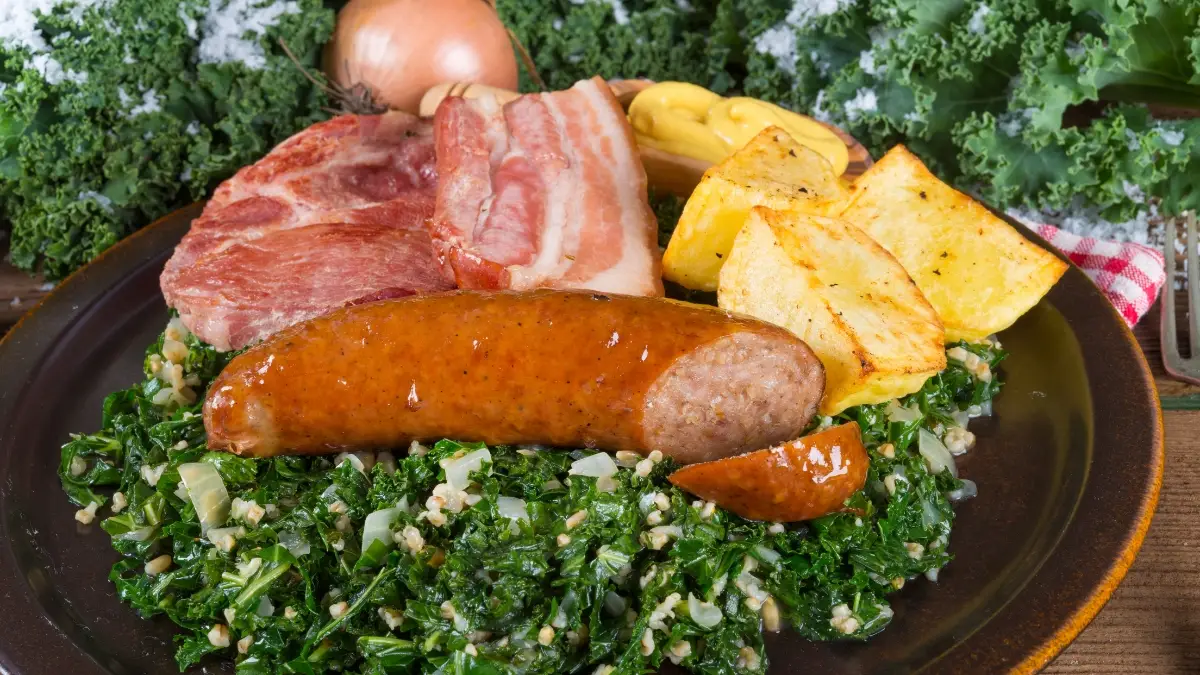
Grünkohl mit Pinkel is a dish that warms the soul during the cold winter months. This hearty meal features kale simmered with smoked sausages like Pinkel, a type of sausage unique to northern Germany. Often served with potatoes and mustard, it’s a staple in regions like Lower Saxony and Bremen.
The dish’s origins lie in the need for nutritious, long-lasting meals during harsh winters. Kale, a hardy vegetable, was readily available and packed with vitamins. Combined with the rich, smoky flavors of the sausage, it creates a dish that’s both nourishing and deeply satisfying.
Grünkohl mit Pinkel is more than just food; it’s a cultural experience. In northern Germany, it’s often enjoyed during Kohlfahrten, or kale tours, where groups gather to walk, eat, and celebrate. For anyone seeking a taste of northern German tradition, this dish is a must-try.
13. Leberkäse
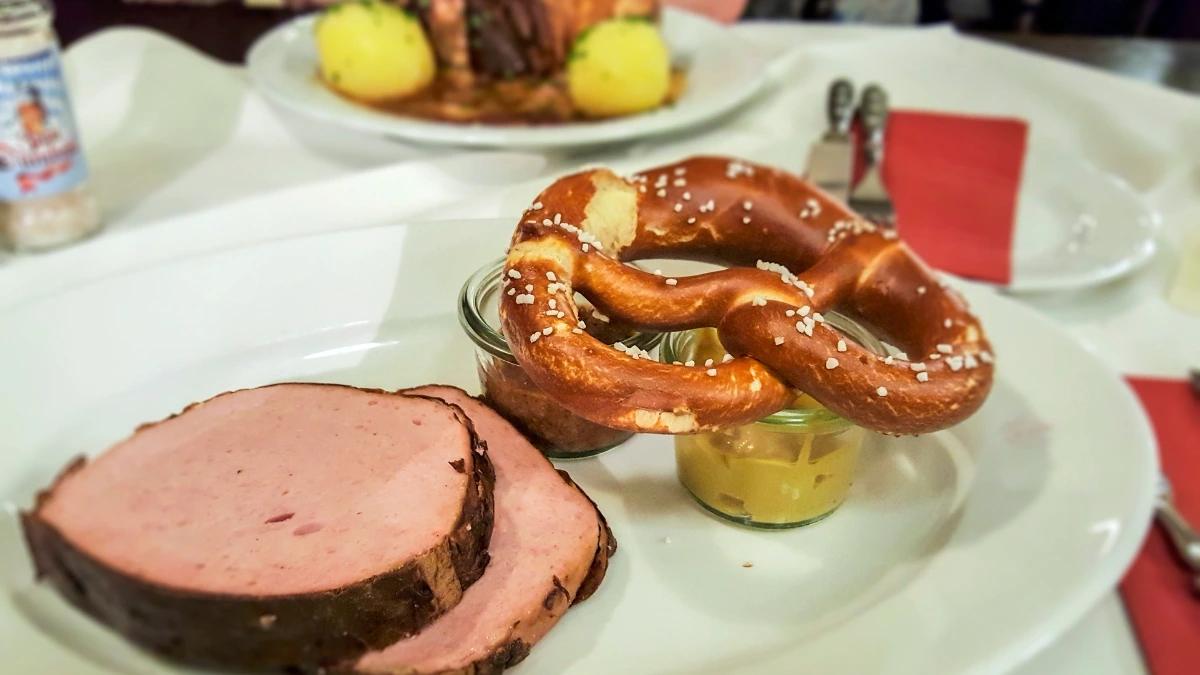
Leberkäse, a Bavarian specialty, is a finely ground meatloaf made from pork, beef, and spices. Despite its name, which translates to “liver cheese,” it contains neither liver nor cheese. Instead, it’s a savory loaf that’s baked until golden and crispy on the outside.
Often served in a bread roll as a snack or with a side of potato salad for a meal, Leberkäse is a versatile and beloved dish. Its texture is smooth and firm, with a rich, meaty flavor that’s enhanced by a touch of mustard or pickles. In Bavaria, it’s a common sight at butcher shops and beer gardens.
What makes Leberkäse unique is its simplicity and versatility. It’s a dish that’s deeply rooted in Bavarian culture, offering a quick and satisfying bite for locals and visitors alike. For anyone exploring German cuisine, Leberkäse is a flavorful introduction to Bavarian traditions.
14. Dampfnudeln
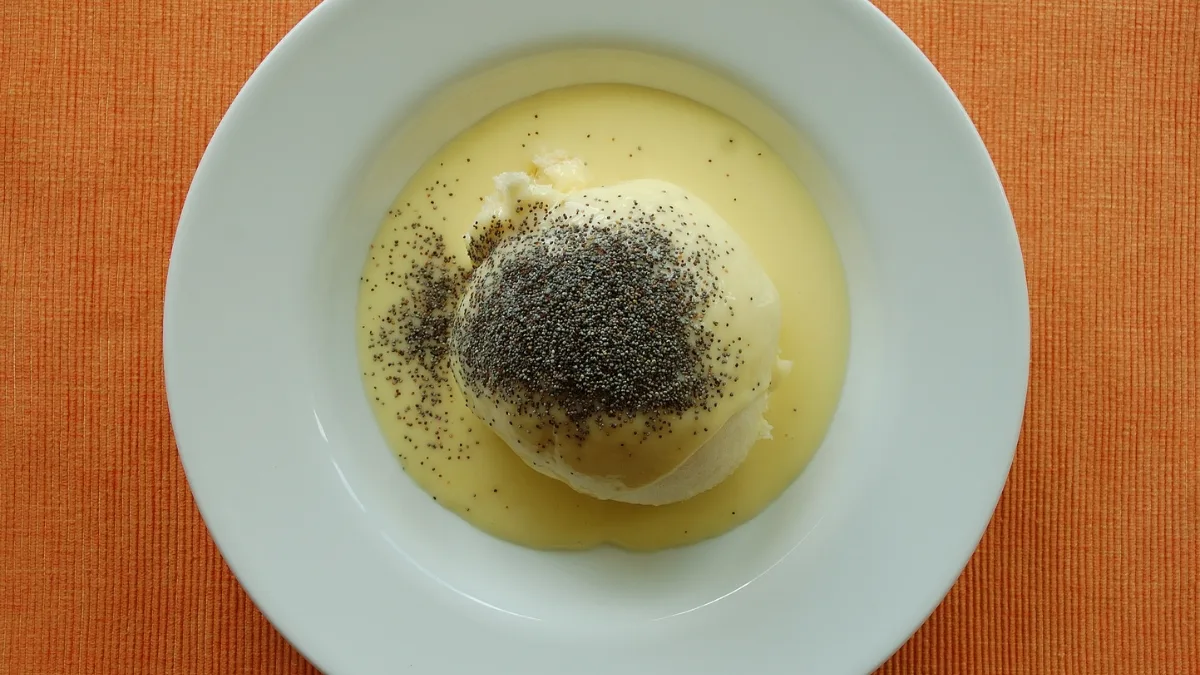
Dampfnudeln are fluffy steamed dumplings that showcase the versatility of German cuisine. These soft, pillowy dumplings can be served as a savory main course with sides like cabbage or potatoes, or as a sweet dessert topped with vanilla sauce and fruit.
Originating from southern Germany, Dampfnudeln have a rich history tied to frugal home cooking. The dough is simple, made from flour, yeast, and milk, but the steaming process gives it a unique texture that’s both light and satisfying. The dish’s adaptability makes it a favorite in households across the country.
What sets Dampfnudeln apart is their comforting nature. As a hearty meal or as a sweet treat, they offer a sense of warmth and nostalgia. For anyone looking to explore the softer side of German cuisine, Dampfnudeln are a delightful choice.
15. Schwarzwälder Kirschtorte
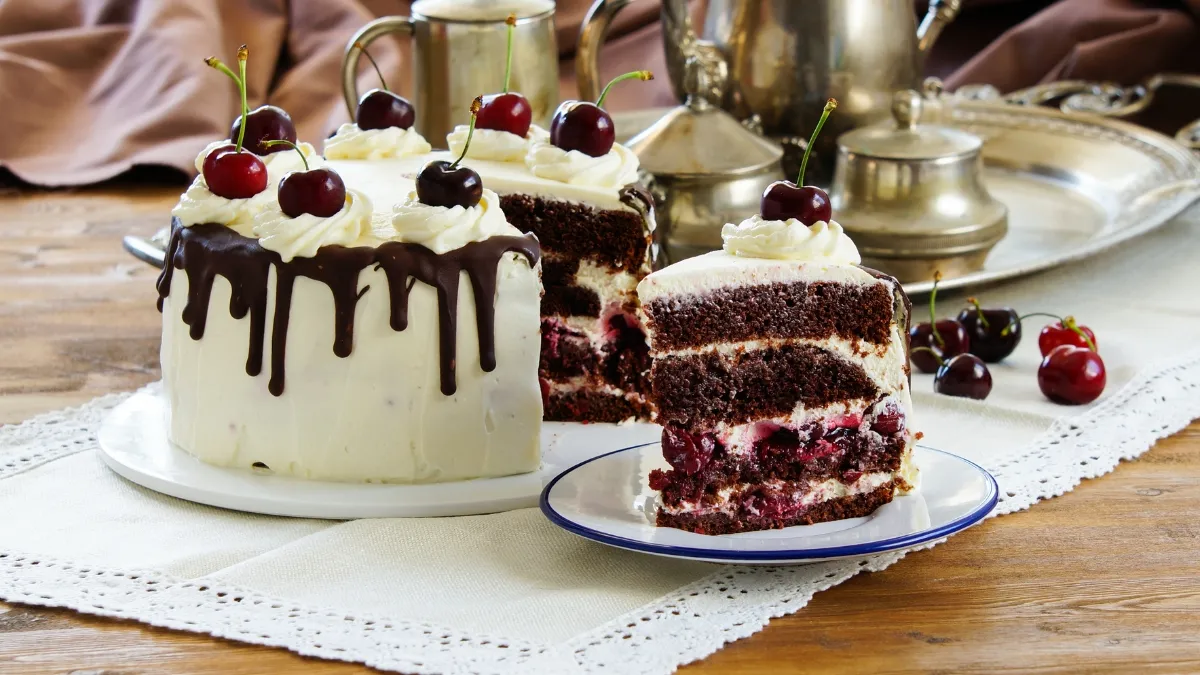
Schwarzwälder Kirschtorte, or Black Forest Cake, is an iconic dessert that has captivated taste buds worldwide. This decadent cake features layers of chocolate sponge, whipped cream, and cherries, all infused with kirsch, a cherry brandy from the Black Forest region.
The cake’s origins are steeped in history, with some tracing it back to the 16th century when chocolate and cherries were first combined in the region. Its name and appearance evoke the dark, mysterious forests of southwestern Germany, making it a symbol of the area’s culinary heritage.
What makes Schwarzwälder Kirschtorte special is its balance of flavors and textures. The rich chocolate, tart cherries, and smooth cream create a harmonious blend that’s both indulgent and refreshing. For anyone with a sweet tooth, this cake is a must-try masterpiece of German baking.


